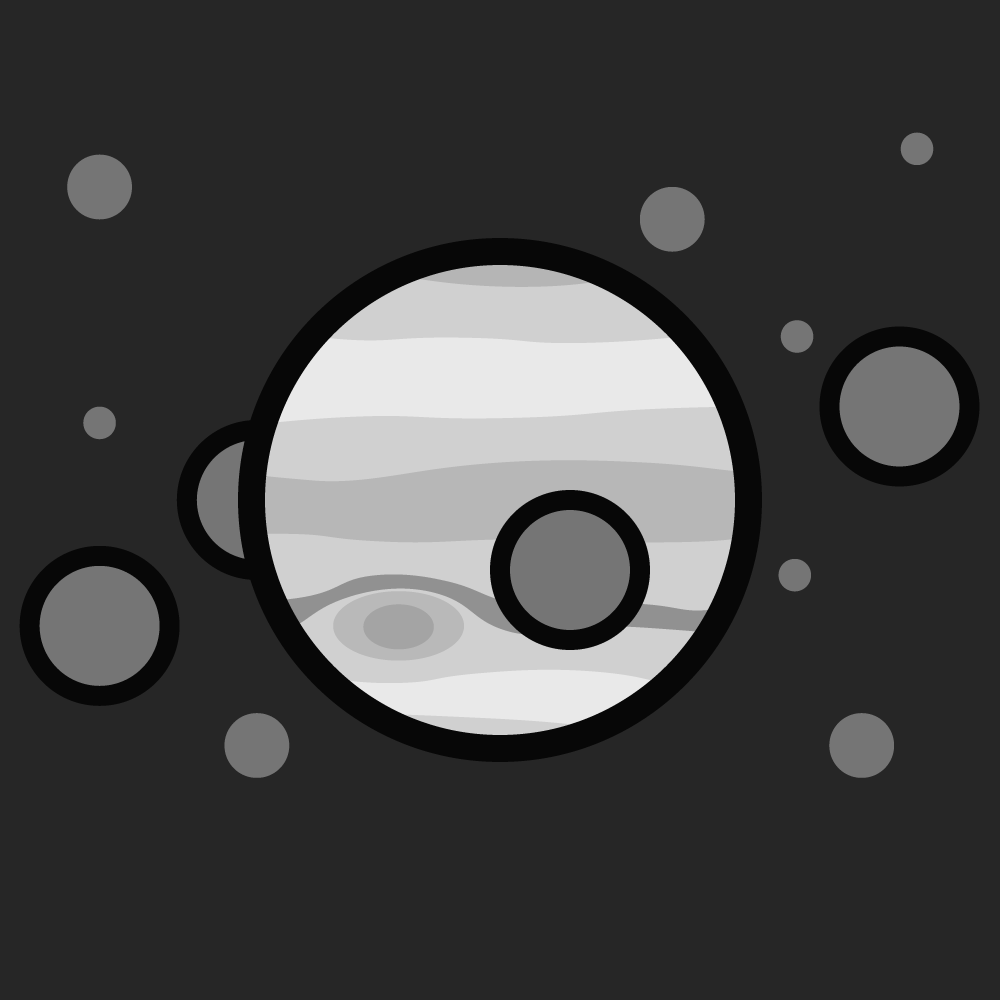Dia, a moon of Jupiter
7,645,896 miles
2 miles
Dia is a small moon of Jupiter. It was discovered in 2000 and takes about 287 to complete a journey around the planet, orbiting at a distance of approximately 12.5 million kilometres (7.5 million miles).
Dia is an irregular prograde moon. This means that it was captured by Jupiter's pull of gravity and orbits in the same direction as Jupiter's rotation. As with many irregular moons, Dia has an inclined (tilted) and eccentric (not circular) orbit. It orbits at an angle of 28 degrees with an eccentricity of 0.248.
Dia is part of the Himalia group of Jupiter's moons. The other moons in this group are Leda, Himalia, Ersa, Pandia, Elara, Lysithea. These moons share similar orbital characteristics and may have the same origin. Himalia is the largest of these moons and gives the group its name. It is thought that it may once have been an asteroid which orbited in the asteroid belt. A possible collision nudged Himalia out of the asteroid belt and towards Jupiter. The collision also caused parts of it to break off to become the smaller moons in the group, with Dia being one of those moons.
Dia was first observed in September 2000 by Scott S Sheppard and a team of astronomers at the University of Hawaii. It was originally referred to as S/2000 J11, meaning that it was the 11th moon of Jupiter to be discovered in 2000. After these early observations, the moon wasn't seen again until 2010. Some astronomers thought that it may have collided with Himalia and created a ring, but its rediscovery in 2010 proved that it had done no such thing.
Dia is named after an ancient Greek mythological figure. Her name means 'heavenly', 'bright sky' or 'belonging to Zeus'. She was the daughter of Deioneus and wife of Ixion. Ixion promised to give Deioneus expensive gifts in exchange for marrying his daughter, but instead killed him by pushing him into a bed of burning wood and coals. Although Ixion was treated as an outcast for this deed, Zeus, the Greek equivalent of the Roman god Jupiter and king of the gods, was more forgiving. However, Ixion's way of showing gratitude to Zeus' kindness was to chase after Zeus' wife Hera. An angered Zeus threw a thunderbolt at Ixion, and ordered Hermes (Mercury) to attach Ixion to a spinning wheel of fire and spend eternity spinning around in Tartarus, the torture chamber of the underworld. He's probably a bit dizzy now. As for Dia, she had a child with Zeus who, for whatever reason, took on the appearance of a stallion. Their child was Pirithous, a Lapith King.
The moon Dia was named on 7th March 2015. All irregular prograde moons of Jupiter must have a name that ends with 'a'.






